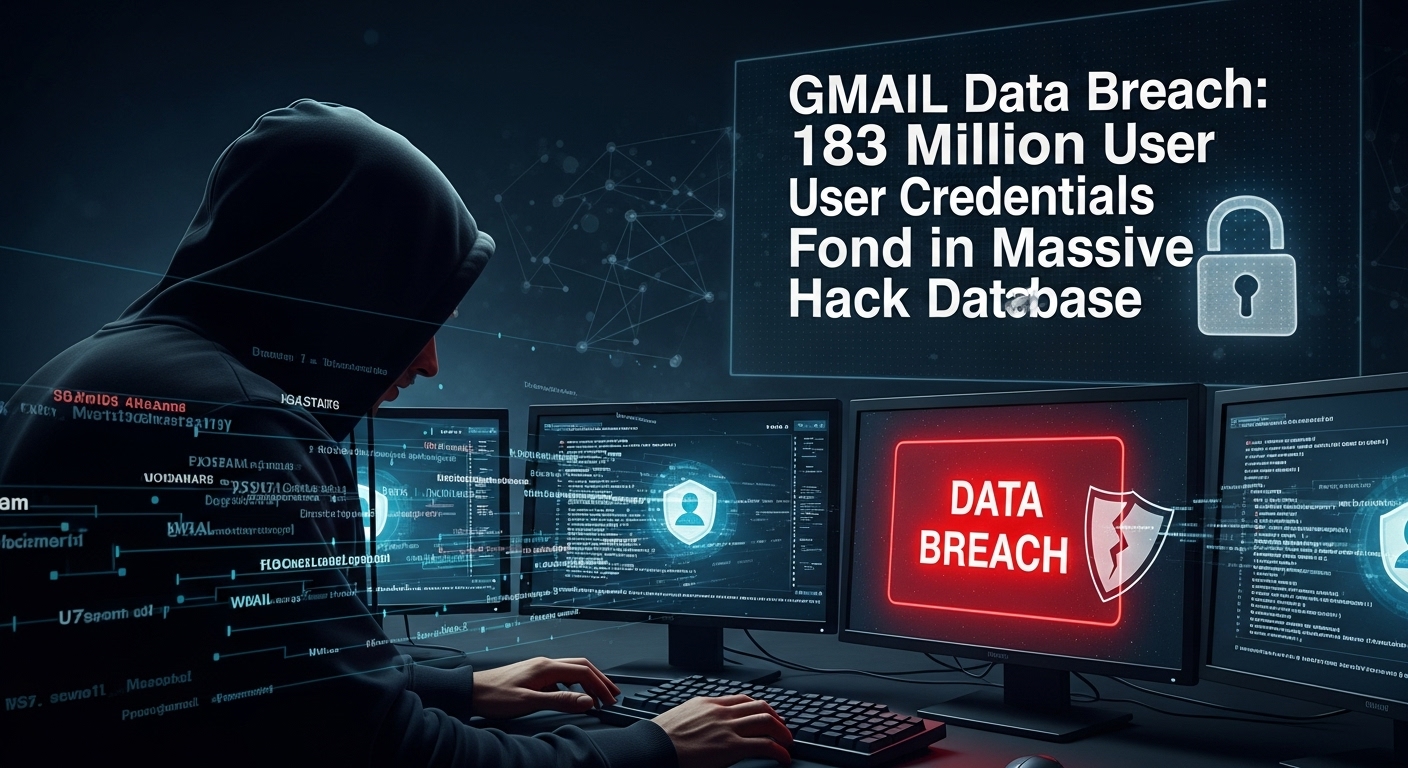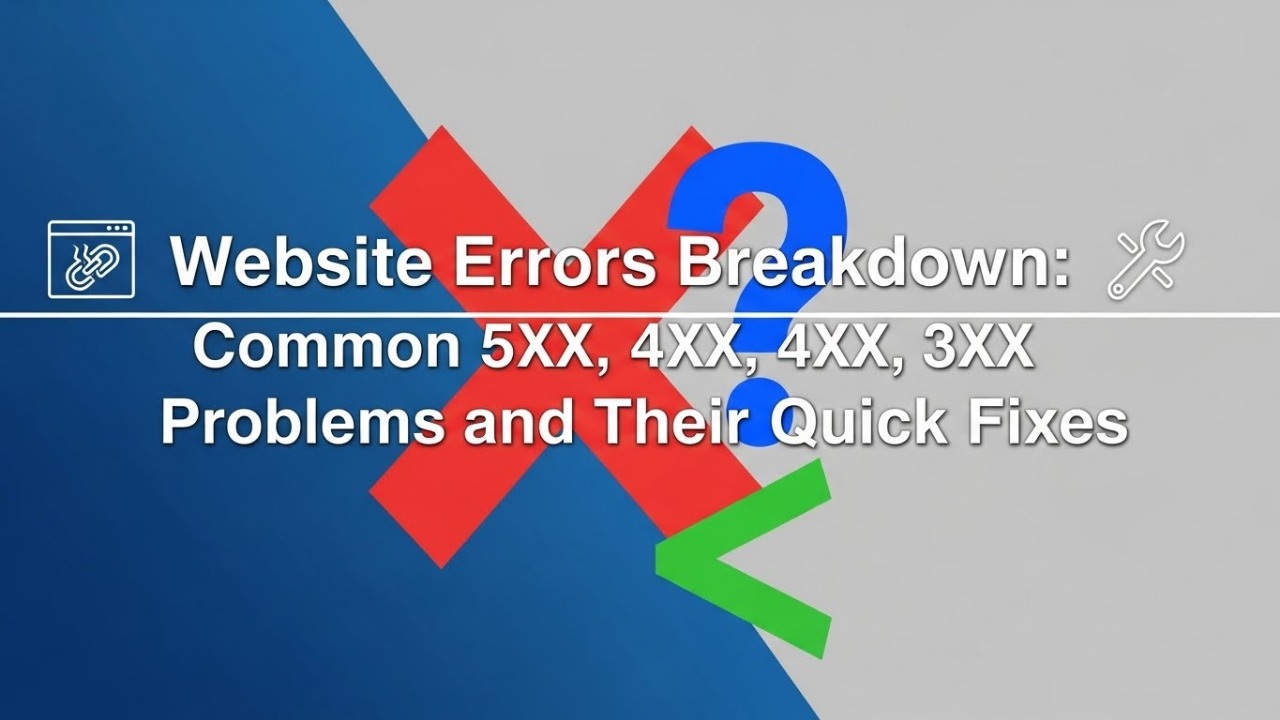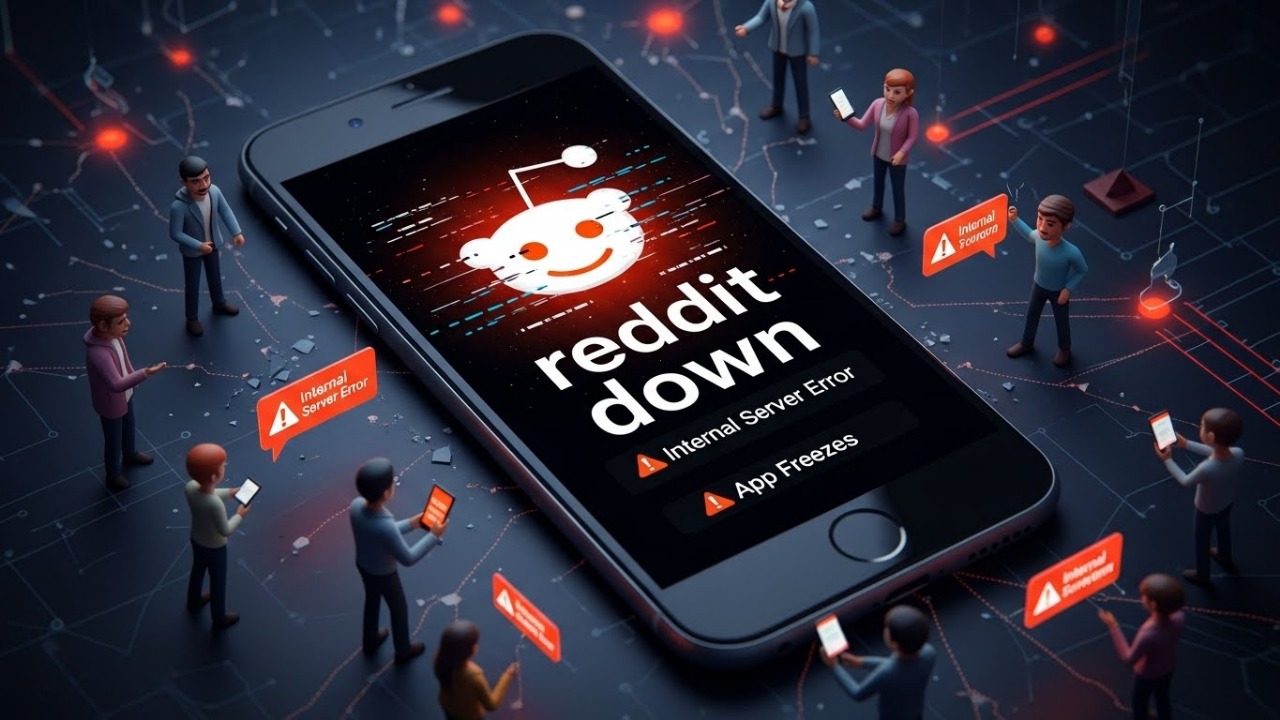GMAIL Data Breach Exposes Millions of Accounts
A shocking GMAIL Data Breach has reportedly compromised over 183 million user credentials, marking one of the largest data exposures of 2025. According to cybersecurity researchers, the leaked information, containing usernames, passwords, and linked recovery emails, was discovered in a massive dark web database. The incident raises serious concerns about user privacy, password safety, and the growing threat of large-scale credential theft targeting major tech platforms.
How the GMAIL Data Breach Was Discovered
The GMAIL Data Breach came to light when cybersecurity analysts detected a new dataset uploaded to an underground hacker forum in early October 2025. The leak, named “InfoStealer Composite Database”, contained over 10 billion combined records from multiple platforms. Out of these, around 183 million records were confirmed to belong to Gmail users.
The stolen information was compiled from multiple malware campaigns and phishing operations, some dating back to 2020. Hackers collected credentials through infected browsers, keyloggers, and fake login pages designed to mimic Gmail’s official sign-in portal.
Researchers confirmed that many credentials are still active, posing immediate risks to users across the United States, United Kingdom, and Australia—regions where Gmail adoption is highest.
What Information Was Exposed in the GMAIL Data Breach
According to early forensic analysis, the leaked data includes more than just email addresses. The GMAIL Data Breach exposed:
- Full email addresses and passwords
- Linked recovery emails and phone numbers
- IP addresses and device fingerprints
- Browser autofill data, including names and addresses
- App access tokens for connected services
This depth of information gives hackers enough access to bypass security measures, impersonate users, and gain entry to associated accounts such as banking apps, cloud storage, and work systems.
Google’s Official Response to the GMAIL Data Breach
In response to the GMAIL Data Breach, Google released a statement confirming that no internal systems were directly compromised. Instead, the company emphasized that the credentials were obtained from third-party infections and phishing attacks rather than a direct hack of Google’s servers.
Google stated that its automated security systems have reset affected accounts and issued alerts to users whose information appeared in the leaked dataset. The company urged users to enable two-step verification (2FA) immediately and use unique passwords for each account to reduce the risk of reuse attacks.
Global Impact: Millions of Gmail Users at Risk
The GMAIL Data Breach has created widespread alarm, especially in countries with high Gmail usage.
In the United States, cybersecurity officials estimate that nearly 76 million Gmail users may have been affected. In the United Kingdom, the breach could impact around 19 million users, while Australia faces potential exposure of 6.3 million accounts.
The leaked credentials are being actively sold and traded on dark web marketplaces, often bundled with other breached data from social media and e-commerce sites. Security experts warn that credential-stuffing attacks—where hackers use stolen passwords to access other services are likely to surge in the coming weeks.
How the Breach Highlights the Dangers of Reused Passwords
One of the biggest takeaways from the GMAIL Data Breach is the persistent problem of password reuse. Many affected users reportedly used the same password across multiple platforms, giving hackers access not only to Gmail but also to banking, shopping, and work accounts.
Cybersecurity firms advise that each online account should have a unique, randomly generated password. Password managers and 2FA apps can significantly reduce vulnerability, even if a password is exposed.
Cybersecurity Experts Warn of More Data Dumps
Following the GMAIL Data Breach, analysts predict a wave of similar leaks in the near future. Many of the stolen credentials originate from InfoStealer malware, which continues to infect millions of devices worldwide.
These malware programs silently collect passwords from browsers and send them to command servers controlled by cybercriminals. As databases grow, hackers aggregate this information into large “combo lists” sold to scammers and identity thieves.
Experts warn that users should assume their information has been leaked if they have ever reused passwords or entered credentials into suspicious websites.
Steps Gmail Users Should Take Immediately
Following the GMAIL Data Breach, users should take immediate action to protect their accounts.
Here’s what security professionals recommend:
- Change your Gmail password immediately, using a unique combination of characters.
- Enable 2-Step Verification (2FA) using the Google Authenticator or a hardware key.
- Check for suspicious activity in your account’s login history.
- Review connected third-party apps and remove unknown access permissions.
- Run a malware scan on your devices to remove any possible keyloggers.
- Monitor financial and social media accounts for unauthorized activity.
These proactive steps help limit damage and prevent further unauthorized access, even if personal data was part of the exposed dataset.
Authorities and Cybersecurity Agencies Respond
In the aftermath of the GMAIL Data Breach, global cybersecurity agencies have started investigations into the origin and scope of the data leak.
The UK’s National Cyber Security Centre (NCSC) and the Australian Cyber Security Centre (ACSC) have issued alerts urging citizens to reset their Gmail passwords. The U.S. Cybersecurity and Infrastructure Security Agency (CISA) has also flagged the breach as “high risk” due to the potential for large-scale identity theft and phishing fraud.
These agencies are working in collaboration with Google’s internal security team and third-party analysts to identify how the data is being distributed and to track the actors behind the dark web sale listings.
Potential Consequences of the GMAIL Data Breach
The effects of the GMAIL Data Breach go beyond compromised inboxes. Once hackers gain access, they can reset passwords for other services, intercept sensitive information, or launch targeted phishing attacks from legitimate-looking Gmail addresses.
Businesses are also at risk, especially those using Gmail for corporate communication. Compromised business accounts could lead to data leaks, financial scams, and reputational damage.
The long-term consequences depend on how quickly users and organizations respond to secure their digital infrastructure.
What Makes This GMAIL Data Breach Different
Unlike smaller leaks limited to usernames, the GMAIL Data Breach includes detailed metadata such as IP addresses, login timestamps, and recovery details. This level of granularity allows hackers to profile users and bypass location-based security filters.
Additionally, the breach spans multiple years of data, suggesting a long-term failure by users to rotate credentials or detect phishing attempts. Security professionals describe it as a “wake-up call” for millions of people who still underestimate online threats.
Conclusion:
The GMAIL Data Breach underscores how fragile online security can be when users rely on outdated passwords or ignore basic safety practices. With 183 million Gmail credentials exposed, it’s clear that even the world’s biggest email service is not immune to indirect cyberattacks.
We urge all Gmail users in the United States, United Kingdom, and Australia to take swift action: reset passwords, enable multi-factor authentication, and stay alert for suspicious activity. The digital world demands vigilance, and this breach is a reminder that strong personal cybersecurity habits remain the first line of defense.








.svg)
.svg)